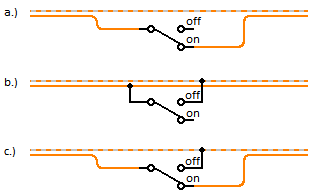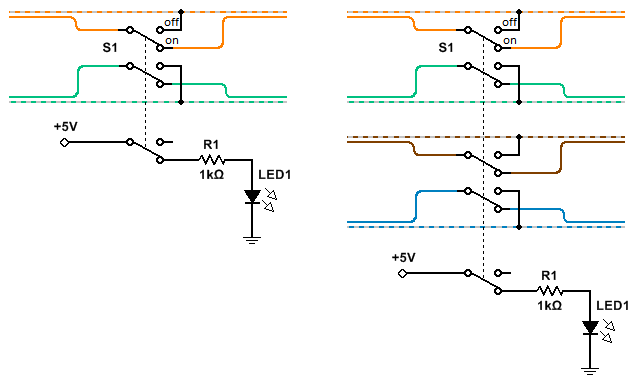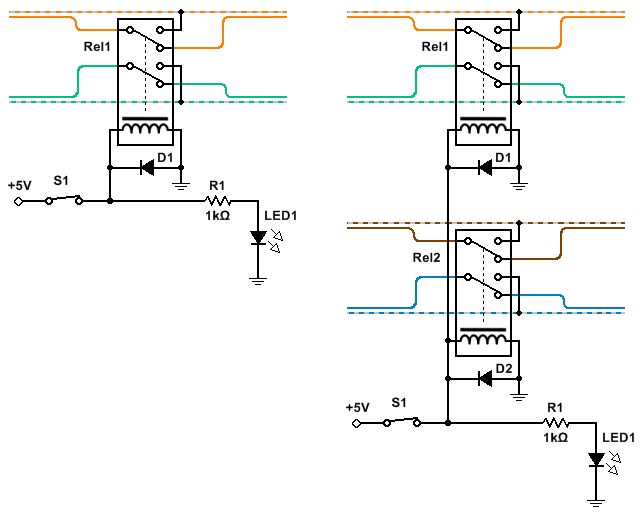DIY Ethernet toggle switch
I'm sure many of you have run into situations where you needed to quickly turn off the internet connection. Depending on the situation, simply turning off connectivity from software may work, but the only sure way to get offline is to turn off your modem/router/switch, or physically unplug the Ethernet cable.
If your daily activity requires frequent disconnections and you're not afraid of some basic DIY work, you may consider building a simple internet toggle switch. This project is not for everyone: you'll need at least a soldering iron, some simple tools and a basic grasp of electronics. If you don't, better look for some cheap commercial products.
Small theory
A typical CAT5/CAT6 UTP cable has 4 pairs of twisted wires. 10BASE-T or 100BASE-TX (10/100-Mbit/s) only uses 2 pairs, 1000BASE-T1 (Gigabit Ethernet) uses all 4 pairs. A good toggle switch should simultaneously control all used pairs (2 or 4) to be effective.

There are multiple ways a pair of twisted wires could be switched:
- a.) The first and most obvious one is to simply break open a single wire from a pair.
- b.) Short-circuiting a pair is also a way to cut off communication. The Ethernet interface will usually see it as a cable disconnect.
- c.) Combine the two above: break open a wire and simultaneously short-circuit one or both sides of a twisted pair. This is our chosen solution in the following circuits.
Toggle switch schematics
You will need a small 2P2T switch for 10/100 connection or a 4P2T switch for a Gigabit connection. The switch can be of any type: rotary, sliding, push-button, etc. Avoid big, bulky switches, as they will introduce substantial loss.

If you would also want visual indication of the connection's state, you'll need a 3P2T/4P2T (or 5P2T/6P2T for Gigabit) switch and a small 5-12V power supply from a battery, a wall adapter or taken directly from the computer supply. You can adjust the brightness of the LED by choosing a suitable value for R1.
To minimize losses you should leave the twisting intact as much as possible. Cut one wire from a pair, then solder the two ends to the switch. The other wire does not need to be cut. Just remove 1-2 mm of plastic isolation and solder it directly to the switch's leg.
Ideally the entire circuit should be enclosed in a small metal box and placed in an arm's length on your desk. Alternatively, you can mount it into an emptied CD-ROM/floppy box and insert it in a free slot in your PC.
The cables should be routed to Ethernet connectors on the back of the box, but you could also solder the switch directly to the middle of a standard UTP cable.
Internet toggle switch with relays
We can take the circuit one step further and replace the multi-pole physical switch with one or two relays:

This design has multiple benefits:
- First, we'll only need a simple 1P1T switch that - if needed - be separated from the bulky connector box and placed anywhere on your desk.
- You can use specialized RF rated relays or reed relays to cut off losses to an absolute minimum.
- The relays could be controlled from your computer/router, with the help of a custom program.
- If you, for example, feed the circuit from the computer's supply, you can be sure that the network cable is physically disconnected when the computer is powered off, etc.
Additional notes
I built the circuits presented here years ago, both one with the physical switch and the one using relays. I use them in my setup and they work flawlessly to this day. They introduce some minor loss in speed indeed, but I find it negligible.
If speed is critical for your application a better (but a bit more expensive) way to achieve the same thing is to buy a simple 4-5 port Ethernet switch and mount a basic 1P1T switch on its adapter. Just make sure to select a model with an instant-on time, as I've seen ones that take several seconds to boot, and that can be annoying.
Only take on this project if you're well versed in electronics. A small mistake could damage your computer, router, etc. There are acceptable commercial product on the market you could buy if you're not confident enough in your DIY skills.